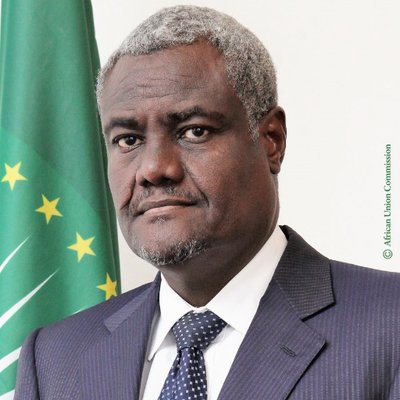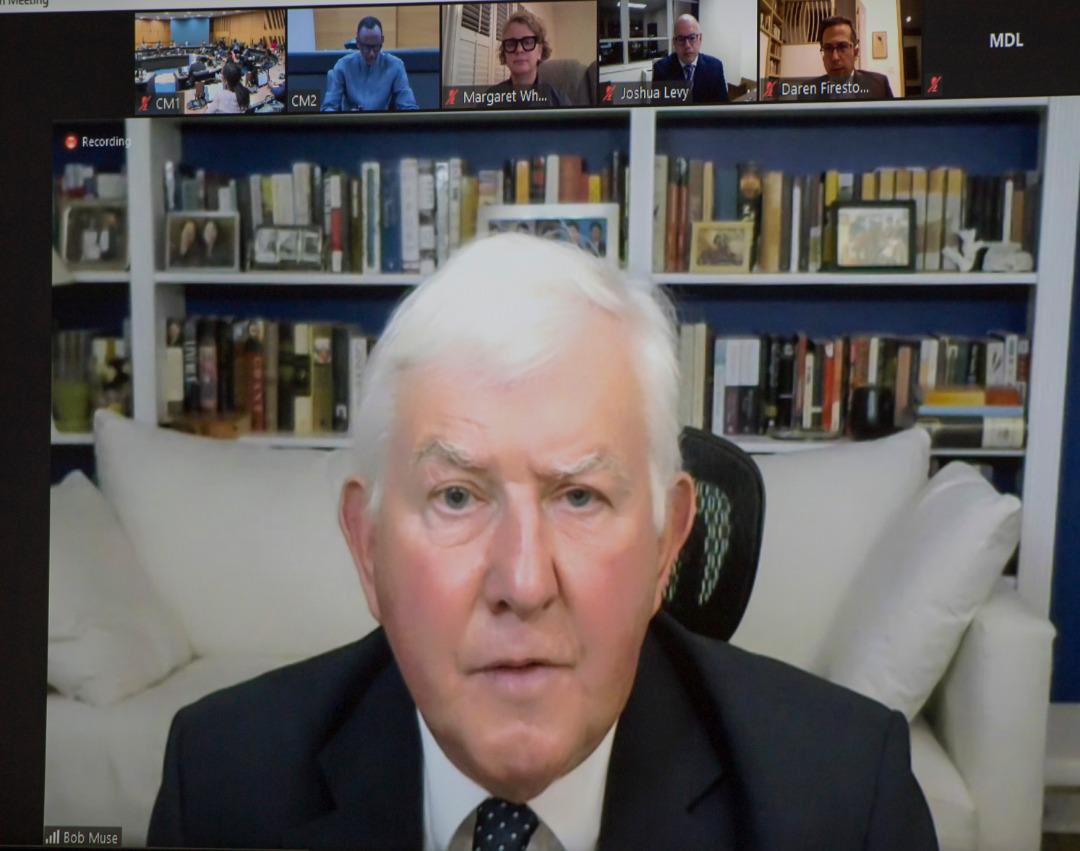Regional
AU commends exhaustive fact finding report on role of France in Genocide against the Tutsi

Moussa Faki Mahamat, Chairperson of the African Union Commission
The
Chairperson of the African Union Commission, Amb Moussa Faki Mahamat, on Monday, April
20 commended the exhaustive fact-finding
report on the role of France in the 1994 Genocide against the Tutsi
in Rwanda, commissioned by the Government of Rwanda in 2017 from the law firm
of Levy Firestone Muse LLP, and released on April 19 after submission to the
Rwandan Cabinet.
The
Chairperson’s statement on the Muse Report in relation to the 1994 Genocide
observed that the new report builds on Rwanda’s Mucyo Report of 2007, with a
new focus on the French political officials who “enabled a foreseeable
genocide” in Rwanda in 1994.
The
Muse Report follows on the Duclert Report commissioned by the French
Government, which found that France bore “heavy and overwhelming
responsibilities” in the most tragic event in contemporary African history,
whose effects continue to mark our Continent, reads part of the Chairperson’s
statement. "Dignity rests on truth, respect and mutual recognition,"
AUC Chairperson Moussa Faki Mahamat said.
"The
Chairperson of the African Union Commission salutes the political courage of
President Paul Kagame of Rwanda and President Emmanuel Macron of France for
these moves toward a more shared understanding, which merit the endorsement of
Africa as a whole."
The
Muse report sheds light on the fact that the French government was neither
blind nor unconscious about "the foreseeable genocide." The report details how, from 1991 to 1992, the
French Government increased its support as the Habyarimana regime dehumanized
and massacred the Tutsi.
It
details how, between January and March 1993 and later, ignoring a devastating
human rights report exposing the Rwandan Government, the French Government
reached the pinnacle of its intervention in the war against the RPF which was
fighting to prevent the Genocide.
As
the RPF military came closer to ending the Genocide, it is noted, then French
President Francois Mitterrand denied France’s responsibility for the Genocide
and claimed that he could not have foreseen it.
"This was false. In the four years preceding the Genocide, no State
worked more closely with the Habyarimana government than did France."
Beginning
in October 1990, French officials in Rwanda informed Mitterrand and his top
aides in Paris that the Rwandan government was massacring Tutsi as reprisals for
RPF attacks, it is noted. Soon after the
arrival of French troops, French officials became aware of the dehumanization,
vilification, and killing of Tutsi. As former French Ambassador to Rwanda
Georges Martres would later reflect, “The genocide was foreseeable as early as
then [October 1990], even if we couldn’t imagine its magnitude and
atrociousness.”
On
October 24, 1990, the defense attaché at the French embassy in Rwanda, Colonel
René Galinié, warned of “the physical elimination of the Tutsi within the
country, 500,000 to 700,000 people.”
In January 1993, it is noted, a consortium of international human rights groups reported to French officials in Rwanda and Paris on its fact-finding mission in Rwanda and detailed government-run death squads and anti-Tutsi massacres. "The French Ministry of Defense disregarded an internal warning from April 1993 to leave Rwanda to avoid being further implicated in the anti-Tutsi massacres and systemic discrimination.
Beginning
in October 1990, hundreds of French officials—military and civilian—deployed in
Rwanda "were privy to the hate media outlets (printed and broadcast in
French), the use of ethnic IDs, the use of roadblocks to harass Tutsi, the
sexual assault of Tutsi women, the torture inflicted on Tutsi by the
Gendarmerie", and the growing violence of the militias and the military.
It is
noted thay the French government knew the CDR and other extremists had designs
to murder the Tutsi. In January 1994, three months before the start of the
Genocide, the French government received a warning from an informant, relayed
through the United Nations that the Interahamwe planned to slaughter Tutsi en
masse. "Despite the information
available to French officials that foreshadowed the Genocide, the French
government did not alter its policy in Rwanda."
Since
the Genocide, the French Government has covered up its role, distorted the
truth, and protected génocidaires, the report reveals. French officials,
starting with President Mitterrand, have disclaimed any responsibility for the
Genocide. During a September 1994 interview, Mitterrand insisted that “our
responsibility is nil.”
Most
importantly, the new report, unlike most others before, address the quarter
century after the Genocide. It details and examines the continued cover-up,
obstruction and false narratives promulgated by the French government since
1994.
The
Report is drawn from a range of both primary and secondary documentary sources,
including transcripts; reports and studies by governments, non-government
organizations and academics; diplomatic cables; documentaries and other videos;
contemporaneous news articles; and other such resources. The authors met with
hundreds of individuals and interviewed more than 250 witnesses including
Rwandans who were in country during the Genocide, individual or private French
officials, diplomats, UN officials and international organisations' staff
during the 90s.
While
the Rwandan government placed no restrictions on the researchers' efforts,
there was no cooperation from French officials and government.


